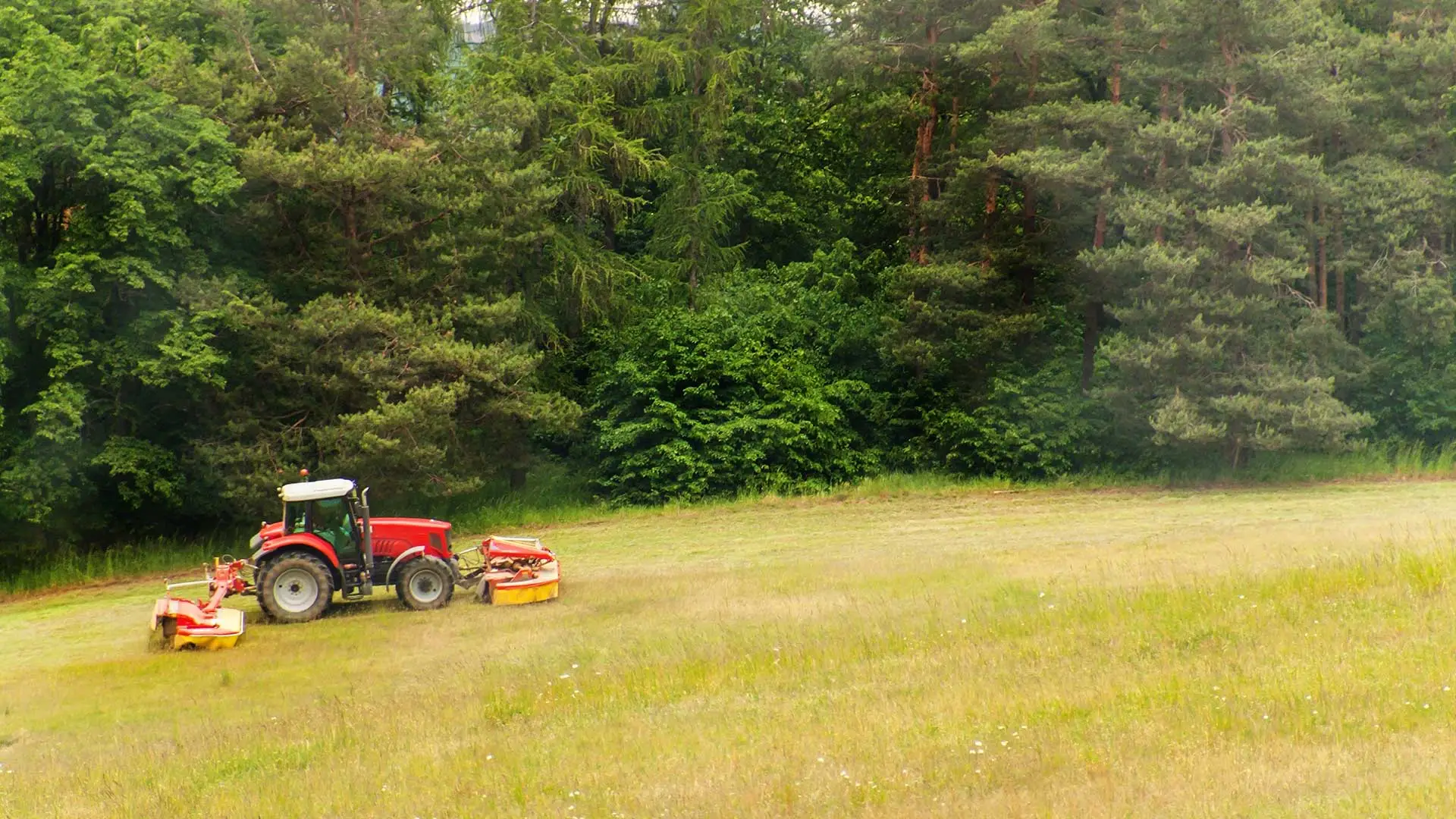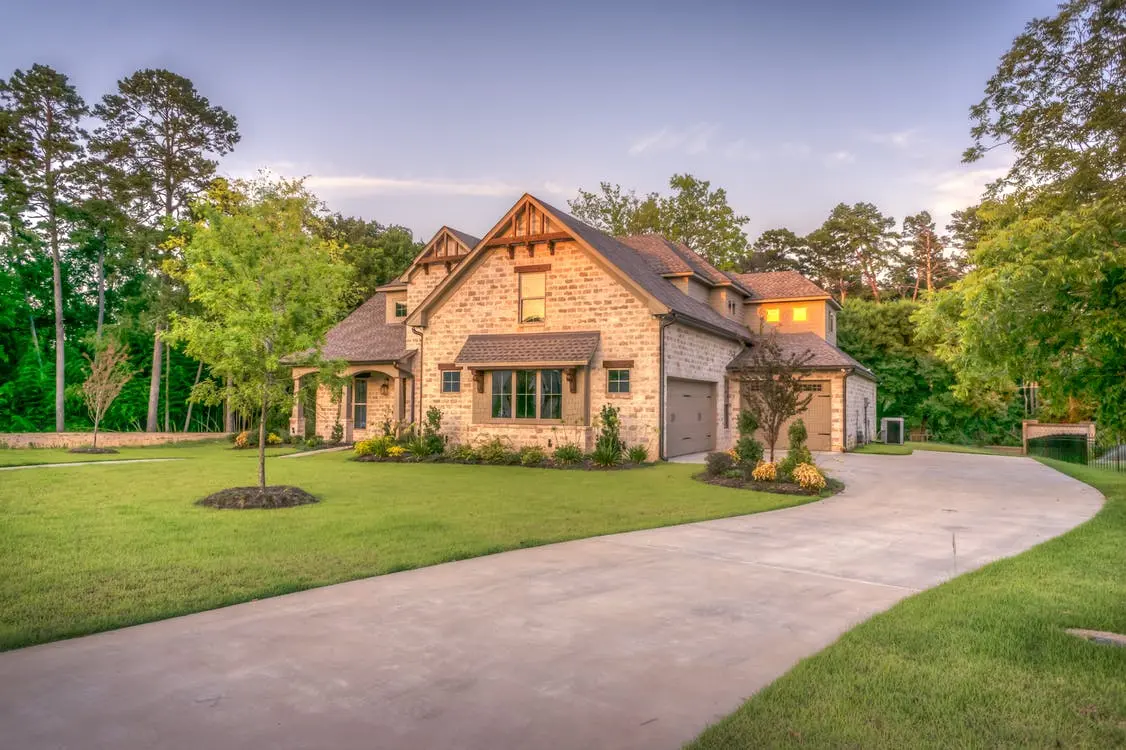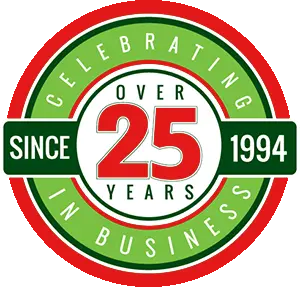The grass that makes up your yard area has a "life cycle." This life cycle is based on what type of grass you have and the climate it is growing in (ie. warm-season, cool-season or biennial grasses). Here in Illinois, our grasses are in the cool-season life cycle as they endure the long, cold winters and regreen in the spring. By understanding the life cycle of grass, you'll be able to determine the best time to fertilize your lawn and treat for weeds.
A common misconception with grass is that you fertilize, seed and weed all at the same time at the beginning of Spring. This is just not good practice. At Linnemann Lawn Care and Landscaping, Inc., we have a 7-step process -
- Step 1: Crabgrass prevention with fertilizer helps to control Spring crabgrass and feeds your lawn.
- Step 2: A second application of crabgrass prevention and fertilizer for your lawn. Also includes an application of broadleaf weed control to kill off problem weeds such as dandelions, chickweed, clover, and other broadleaf weeds.
- Step 3: Insect control helps to control grubs, aphids, stink bugs and other pests. This is applied in conjunction with step 4.
- Step 4: A fertilizer treatment, plus spot spray any broadleaf weeds.
- Step 5: A late Summer fertilizer treatment that also involves a spot spray treatment for additional broadleaf weeds.
- Step 6: A Fall fertilizer treatment that also involves a spot spray treatment for additional broadleaf weeds.
- Step 7: A winterizer fertilization treatment helps get your lawn ready for Spring green-up, while we again spot spray any additional weeds.
This process starts in the Spring and ends right before the Winter season. Giving your yard the benefits it needs in order to regreen and grow properly at the start of the new life cycle in Spring.
Weed and Fertilizer
Steps one and two are beneficial for a few reasons. Crabgrass is the #1 weed in every yard and if it is not killed at the root, it can quickly become a never-ending problem. By applying crabgrass prevention at the start of the season, you are killing the weed at the surface, thereby preventing it from germinating and populating. When paired with fertilizer, you are getting the best of both worlds - killing weeds and feeding your yard.
Two factors that play a role in how well your weed killer performs and how long it lasts is precipitation and heat. If there's more rain and/or heat in the Spring than usual, then it's going to reduce the amount of time your weed killer is affective. This is why Linnemann Lawn Care and Landscaping, Inc. does a second application in step two of the 7-step process - to help your yard see the whole season through with weed control.
Pro Tip: Heat from concreate and/or pavement can affect your yard and it's ability to ward off weeds. In order to get the best out of your weed killer, make sure you are trimming/weeding correctly in these areas.
Seeding Your Yard

Seeding should take place in the Fall in conjunction with aeration. When you aerate and overseed your yard in the fall, you are actually doing two things - you are opening your yard to receive the key nutrients it needs (air, light and water) and you are exposing the roots to pesky weeds in order to prevent them from germinating further.
When grass is fortified through fertilization, aeration, and overseeding, it becomes stronger. Stronger grass has a better ability to fight off common issues like weeds, disease and insect infestations. Without this core process annually, grass becomes weak and is thereby more susceptible to weeds, diseases, and insects which will destroy an entire lawn.
Pro Tip: After aeration and overseeding, DO NOT rack leaves. Instead, blow them with a leaf blower or mulch them up with your lawn mower. Your seedlings have delicate and shallow roots, so the less you do after overseeding and aerating the better.
No matter what type of grass you have and the life cycle it is in, you are going to need to maintain your lawn. Maintenance on a lawn is so much for than just mowing. It is mowing, pruning, trimming, mulching, weeding, aerating, and so on and so forth. The sooner you start treating your yard the same way you do your car (it needs routine maintenance too), the sooner you are going to start seeing a thriving yard that is the envy of your neighbors!
Fertilization and Weed Control Application Services
Giving your lawn the nutrients it requires to reach optimal health is easy with routinely scheduled fertilization and weed control treatments. Linnemann Lawn Care and Landscaping, Inc. offers it's clients a routine fertilization and weed control schedule that gives them the peace of mind they need in order to know their yard is getting everything it needs. If you are looking for this kind of services (residentially or commercially), then give us a call today ---> click here!





Comments (0)
Thanks for your comment!
Thanks for your feedback! Your comments have been successfully submitted! Please note, all comments require admin approval prior to display.
Error submitting comment!
There is a problem with your comment, please see below and try again.